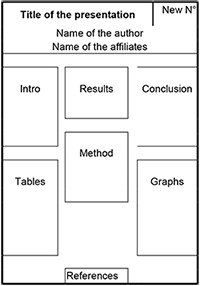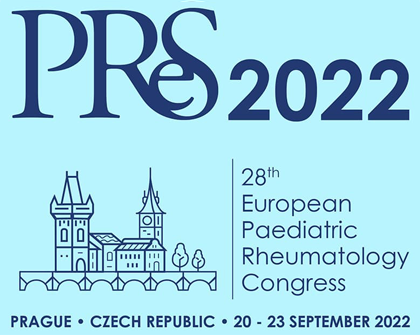PRESENTATIONS SCHEDULE
| Poster session 1 | Set-up time | Tuesday 20th September from 16:30 |
| Dismantling time* | Wednesday 21st September from 17:30 to 19:00 | |
| Poster viewing | Wednesday 21st September from 15:00 to 16:30 |
| Poster session 2 | Set-up time | Thursday 22nd September from 08:00 |
| Dismantling time* | Friday 23rd September from 14:00 to 16:00 | |
| Poster viewing | Thursday 22nd September from 16:45 to 18:15 |
*Posters not removed by the dismantling deadline will be dismantled and destroyed.
RECOMMENDATIONS FOR EFFECTIVE SCIENTIFIC POSTER COMMUNICATION
 It is mandatory to indicate your new abstract number in the upper right corner of the poster
It is mandatory to indicate your new abstract number in the upper right corner of the poster-
Recommended poster format is A0 (84.1 cm x 118.9 cm)
-
Don't overload your poster.
Remember, you are not writing an article. -
Seek simplicity, keep text to a minimum and avoid redundancies.
-
Use 500 to 1'000 words (including title, figure legends and tables), definitely not more.
-
The figures and tables should cover approximately 50% of the poster area.
-
Prepare a 20 cm high title strip that runs the full width of the poster. Use a black and bold typeface, not smaller than 30 mm in height for the title and at least 20 mm for author’s names and affiliations (the height refers to capital and tall letters). Capital letters are usually more difficult to read than small letters.
-
The average reader spends 1-2 minutes on your poster. Highlight your main finding.
Most of us start by reading the Conclusions. Thus, don't hide them in the right lower corner. Put them on eye level, either on top of the right column or alternatively start with the Conclusions. Otherwise, structure your poster by Introduction, Methods and Results. State your aims in the end of the introduction. -
We suggest that the pathway (eye movement) is down the columns. Use 3-5 columns.
-
The poster is supposed to be readable from a distance of 1.5-2 m.
The text should definitely be no less than 5 mm for capitals and tall letters, and preferably larger. Use a constant font throughout the poster. -
Let your important points stand out. Use (but don't overuse) bold and colours.
-
If possible, avoid abbreviations and acronyms, especially in the Conclusions.
-
Feel free to provide one or more key references (in the right lower corner).
-
Handouts of your abstract / poster (with your addresses) to your interested readers may facilitate future research communication.
-
Prepare a short (< 4 minutes) oral guide through your poster to be presented to the officials during the poster visit.

